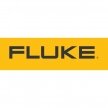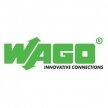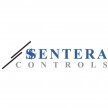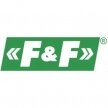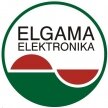-
Product Catalog
- Security and Surveillance Systems
- Automatic Circuit Breakers for Direct Current (DC) Circuits with Integrated Overload, Short-Circuit, and Voltage Stabilization Protection Functions
- Lighting with the help of electrical energy
- Automation and Control Systems
- Sealing profiles | rubber | gaskets | strips
- Inflatable Liquid Storage Tanks | Reservoirs | Bladders
- Inflatable rubber plugs for sealing high-pressure plumbing pipes
- Electrical distribution and installation
- Solar Energy Generation and Management Equipment
- HVAC control solutions for heating and ventilation.
- Special products and accessories
- Other products
- Safety tools
- Quality used products
Surface-mounted sensors
-
Read more
Surface-Mounted Motion Sensors and Detectors
Surface-mounted motion sensors and detectors are modern devices designed to automatically detect motion in the environment and control various systems, such as lighting, alarms, or heating systems. These sensors are mounted on surfaces (walls or ceilings), making them easy to install without significant construction work. They are widely used solutions in both residential and commercial or industrial environments due to their reliability, energy-saving capabilities, and security features.
Types of Surface-Mounted Motion Sensors:
PIR (Passive Infrared) Sensors:
PIR sensors detect heat sources (e.g., people) in the infrared range. When a moving object that emits heat is detected, the sensor activates the controlled system, such as turning on the lights. Suitable for both indoor and outdoor use.Ultrasonic Motion Sensors:
These sensors use ultrasonic waves for motion detection. The sensor emits sound waves that bounce off objects. Upon detecting motion (when the frequency of the returning signal changes), the device activates the system. Often used indoors where precise motion detection is required, even without a direct line of sight.Microwave Motion Sensors:
These use microwave radio signals for motion detection. These sensors can detect motion through walls, glass, and other obstacles, making them highly sensitive and suitable for larger areas or complex environments. Can be used in security systems where motion detection behind obstacles is required.Combined Motion Sensors:
These sensors combine different detection technologies, such as PIR and microwaves, to achieve greater accuracy and reduce false signals. Used where the highest level of reliability is needed, such as in security systems.Technical Specifications:
Detection Angle:
From 90° to 360° detection range, allowing monitoring of spaces of various sizes. Ceiling-mounted sensors can monitor the environment at a 360° angle, while wall-mounted ones typically have a detection angle of 120°–180°.Detection Distance:
Motion detection distance can range from 5 to 15 meters, depending on the model and technology.Power Supply Voltage:
Most sensors operate on 220V/230V AC, but there are also 12V and 24V models suitable for low-voltage systems, such as security systems or vehicles.Operating Temperature:
Depending on the model, sensors operate from -20°C to +50°C, making them suitable for various environmental conditions.Time Settings:
Many sensors have a time setting function that allows adjusting how long the system remains active after detecting motion (from a few seconds to several minutes).Ambient Light Level Setting:
The sensitivity of the sensor can be adjusted based on ambient light intensity, so it only operates when needed (e.g., turning on only in the dark).Functionality:
Automatic Lighting Control:
Motion sensors automatically turn on the lights upon detecting motion and turn them off when motion is no longer detected. This helps save energy and ensures convenience.Security Systems:
Motion sensors are an essential part of security systems, as they can detect unauthorized movements and activate alarms or video surveillance systems.Environmental Control:
Sensors can be used to automatically control ventilation, heating, or cooling systems based on room occupancy, ensuring efficient energy use.Emergency Situations:
Can be used to activate emergency lighting or control other emergency systems when motion is detected.Installation Types:
Wall-mounted:
Installed directly on the wall. Suitable for corridors, staircases, storage rooms, and entrances.Ceiling-mounted:
Installed on ceilings to cover a larger monitoring area. Used in offices, warehouses, or other spaces with high ceilings.Certifications and Safety:
Certifications:
CE and RoHS certifications ensure that the sensors meet European safety, health, and environmental standards.Safety Features:
Many motion sensors have protection against short circuits, overloads, or surges, ensuring their safe use both indoors and outdoors.Compatibility:
Lighting Systems: Compatible with various lighting systems, including incandescent, LED, and fluorescent bulbs.
Alarm and Security Systems: Easily integrated into alarm and video surveillance systems.
Smart Home Systems: Some models can be controlled via smart home platforms, such as WiFi or Zigbee technologies.
Applications:
Home Security and Lighting: Entrances, staircases, bathrooms, yards.
Commercial Spaces: Offices, shopping centers, parking lots, hotels.
Industrial Spaces: Warehouses, manufacturing plants, logistics terminals.
Public Spaces: Parks, stations, outdoor lighting systems.
Summary:
Surface-mounted motion sensors and detectors are essential tools for energy saving and ensuring security. They feature reliable operation in various environments, easy installation, and wide applicability. Motion sensors can be used in both indoor and outdoor conditions, controlling lighting, security systems, and other equipment that responds to environmental movements.No items found.
US IN SOCIAL NETWORKS







